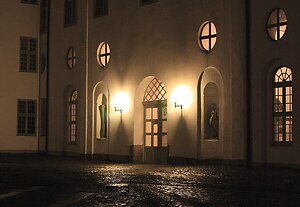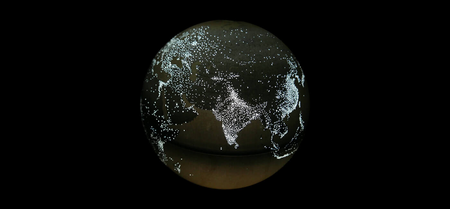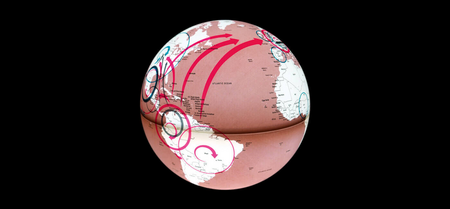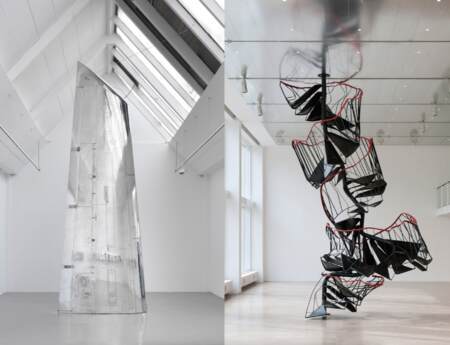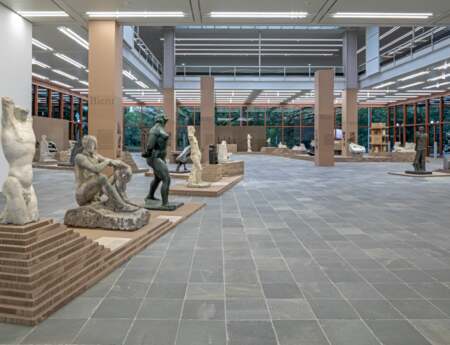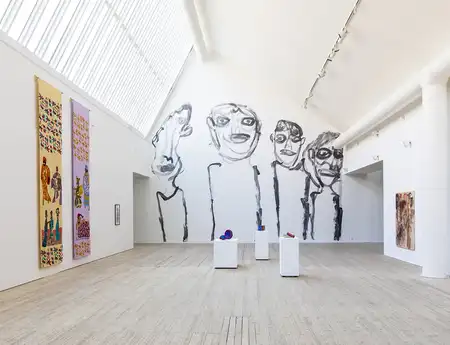Ingo Günther: Worldprocessor
Planet Earth is still blue... but there are a lot of things we can do.
The famous photo Earthrise, which was taken during the Apollo 8 mission, shows the Earth rising above the moon. It was taken on December 24th 1968 and is considered an essential impulse for the emergence of the environmental movement, as it offers the overview effect, which space travellers have repeatedly described as a mind-altering experience. The journey into space recognizes winners and losers, catastrophes, the competition between political systems, the enormous gain in knowledge and the view back to earth that reveals the beauty and fragility of the “blue planet”. When David Bowie's 1969 song Space Oddity says "Planet Earth is blue / And there's nothing I can do", it also resonates with the powerlessness of not being able to stop the destruction of a planet that is as blue as it is sad.
Ludwig Wittgenstein's Tractatus Logico-Philosophicus (1929) begins with the statement that the world is everything that is the case. And it is precisely this sentence that can be found on one of the more than 1.000 illuminated globes that media artist Ingo Günther (*1957, Bad Eilsen) has created since 1989. In the spirit of Wittgenstein, his Worldprocessor globes show facts, contexts and conditions of the world and can be understood as a critical compendium of globalisation.
Ingo Günther initially studied ethnology and cultural anthropology before attending the Düsseldorf Kunstakademie (Art Academy). In 1987, he was accredited as a correspondent at the United Nations in New York and began to work extensively on the visualisation of statistical data. His globes show visualised knowledge and illustrate mountains of debt, car density, migration, the pollution of the world's oceans, defence expenditure, the decline in biodiversity, etc. as global facts.
The illuminated globes manifest a varied and fact-based aesthetic about life in the world. Günther's artistic work is about capturing this world intellectually and emotionally while he sees himself in the role of an unemotional reporter of information. In his artistic practice, he uses journalistic and scientific methods and uses the globes to present social, political, economic and military information. The enormous increase in data and knowledge as well as the rapid changes of the world conditions make it necessary for the artist to rework his globes on an annual basis.
While his initial aim was to uncover problems and injustices from a global perspective and with the intention of educating people, he later realised to his own surprise that the global data made the development and situation of humanity over the past 50 years appear much more successful and better, in clear contrast to the mass media's disaster reporting and the rumours of social media. Perhaps the chances to create a new image of the world are not so bad for hopeful world citizens.
See here for further information.
